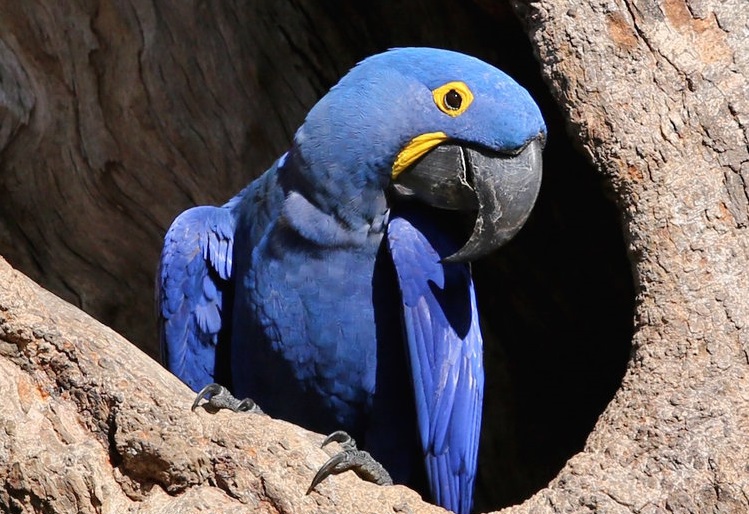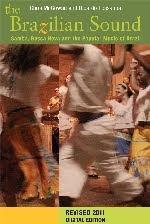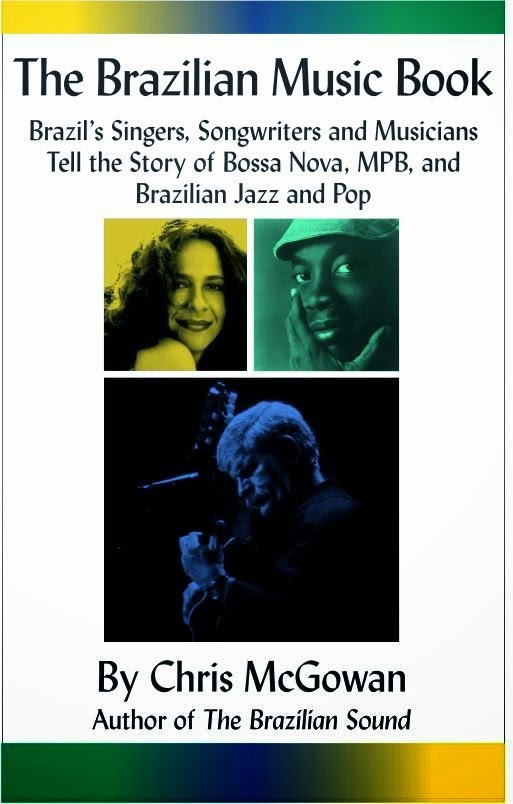The world lost one of the greatest musicians of the twentieth century with the passing of João Gilberto do Prado Pereira de Oliveira, aka João Gilberto (1931-2019), who died on July 6.
The Brazilian singer-guitarist was one of the leading figures of bossa nova, which became one of the world's most beloved musical styles in the 1960s, its standards widely performed and recorded by jazz and pop musicians. Gilberto invented bossa's characteristic beat and introduced its subdued vocal style. Indeed, it is quite possible the genre would never have existed without Gilberto's innovations.
Bossa nova was a new type of samba in which the genre’s
rhythmic complexity was pared down to its bare essentials, transformed
into a different kind of beat. It was full of unusual harmonies and
syncopations, all expressed with a sophisticated simplicity. Sometimes small
combos performed bossa; but it was ideally suited to a lone singer and a
guitar. Thanks to Antonio Carlos Jobim, the genre's foremost songwriter, bossa also had a harmonic richness previously heard only in classical music and modern jazz. This “new fashion” or “new way” (the approximate translation of “bossa
nova”) of singing, playing, and arranging songs was born in Rio de Janeiro in
the mid-1950s.
Gilberto’s highly syncopated style of plucking acoustic guitar
chords— nicknamed violão gago (stammering
guitar) by some—introduced a type of rhythm that resembled a cooled and slowed
samba but was very difficult to play. “He was the only one who could do that
beat at first,” said Brazilian music critic Zuza Homem de Mello, quoted in my book The Brazilian Sound: Samba, Bossa Nova and the Popular Music of Brazil (co-authored with Ricardo Pessanha). “After time
others could, too.”
According to guitarist-songwriter Oscar Castro-Neves in The Brazilian Sound, Gilberto’s guitar style was “a decantation of the main elements of what samba was, which made bossa nova more
palatable for foreigners and the rhythm more easily perceived. He imitated a
whole samba ensemble, with his thumb doing the bass drum and his fingers doing
the tamborins and ganzás and agogôs. The rhythm was right there with his voice and guitar alone.
You didn’t feel anything was missing.”
João’s singing was new as well. Both voice and guitar were
simultaneously melodic and highly rhythmic, as he syncopated sung notes against
guitar motifs. “The way he phrases is incredible,” said Castro-Neves. “The
guitar would keep the tempo going and he would phrase in a way that was
completely free, atop that pulsating rhythm. The way his phrases would fall—he
would delay a chord here, put a note there—was very hypnotic. And he had a blend between the volume of his voice and the
volume of the guitar. He could emphasize a note in the vocal and it would be like
completing a chord on the guitar. Suddenly the voice really complemented the
harmonic structure of the chord.”
Gilberto sang quietly, subtly, with a low-pitched,
smooth, precise voice without vibrato, as if whispering an extremely intimate
secret to the listener alone (Miles Davis was quoted as saying that Gilberto
“would sound good reading a newspaper.”). Gilberto was not a notable songwriter, but his interpretations of Jobim's and others' songs transformed them and gave bossa nova its musical structure.
Gilberto debuted his new guitar style in two songs on vocalist Elizeth Cardoso’s 1958 LP Canção do Amor Demais (Song for an
Excessive Love), which lacked other attributes of the nascent genre, however. Then, in July, 1958, Gilberto released the first bossa-nova single, “Chega de Saudade” (written by Antonio Carlos
“Tom” Jobim and Vinícius de Moraes). He followed that with the first bossa-nova album, also called Chega de Saudade, in 1959.
After Chega de Saudade,
Gilberto recorded two more successful albums that were further benchmarks for the new genre: O Amor, o Sorriso e a Flor (Love, a Smile, and a Flower) in 1960
and João Gilberto in 1961. These
albums included both new bossa tunes and bossa interpretations of old standards
by composers like Dorival Caymmi and the sambistas Bide and Marçal.
Bossa nova reached a global audience with the soundtrack of the film Black Orpheus (in 1959) and the 1962 release of Stan Getz and Charlie Byrd's instrumental Jazz Samba album, which yielded the hit single "Desafinado." Gilberto teamed with Stan Getz and Jobim on the Grammy-winning, bestselling 1964 album Getz/Gilberto, which included "The Girl from Ipanema," which featured a vocal duet between Gilberto and his wife Astrud Gilberto. The latter was a massive worldwide hit and is now one of the most recorded songs of all time.
João Gilberto became one of Brazil and the globe's most influential musicians over the last sixty years, with his impact on Brazilian popular music, jazz and international music. For more on Gilberto and bossa nova, please visit the bossa-nova chapter in The Brazilian Sound. The book has been quoted in various João Gilberto obituaries, including these:
João Gilberto became one of Brazil and the globe's most influential musicians over the last sixty years, with his impact on Brazilian popular music, jazz and international music. For more on Gilberto and bossa nova, please visit the bossa-nova chapter in The Brazilian Sound. The book has been quoted in various João Gilberto obituaries, including these:
The New York Times: "João Gilberto, an Architect of Bossa Nova, Is Dead at 88" (by Ben Ratliff)
Also see:
The Huffington Post: Blame It on the Bossa Nova (by Chris McGowan) and The Brazilian Music Book, my collection of interviews with Gilberto peers like Antonio Carlos Jobim and Carlos Lyra.
Also see:
The Huffington Post: Blame It on the Bossa Nova (by Chris McGowan) and The Brazilian Music Book, my collection of interviews with Gilberto peers like Antonio Carlos Jobim and Carlos Lyra.
by Chris McGowan and Ricardo Pessanha
The leading guide to Brazilian music in the English language is available worldwide in paperback (above) and as an updated Kindle ebook with color photos (below).
_______






















